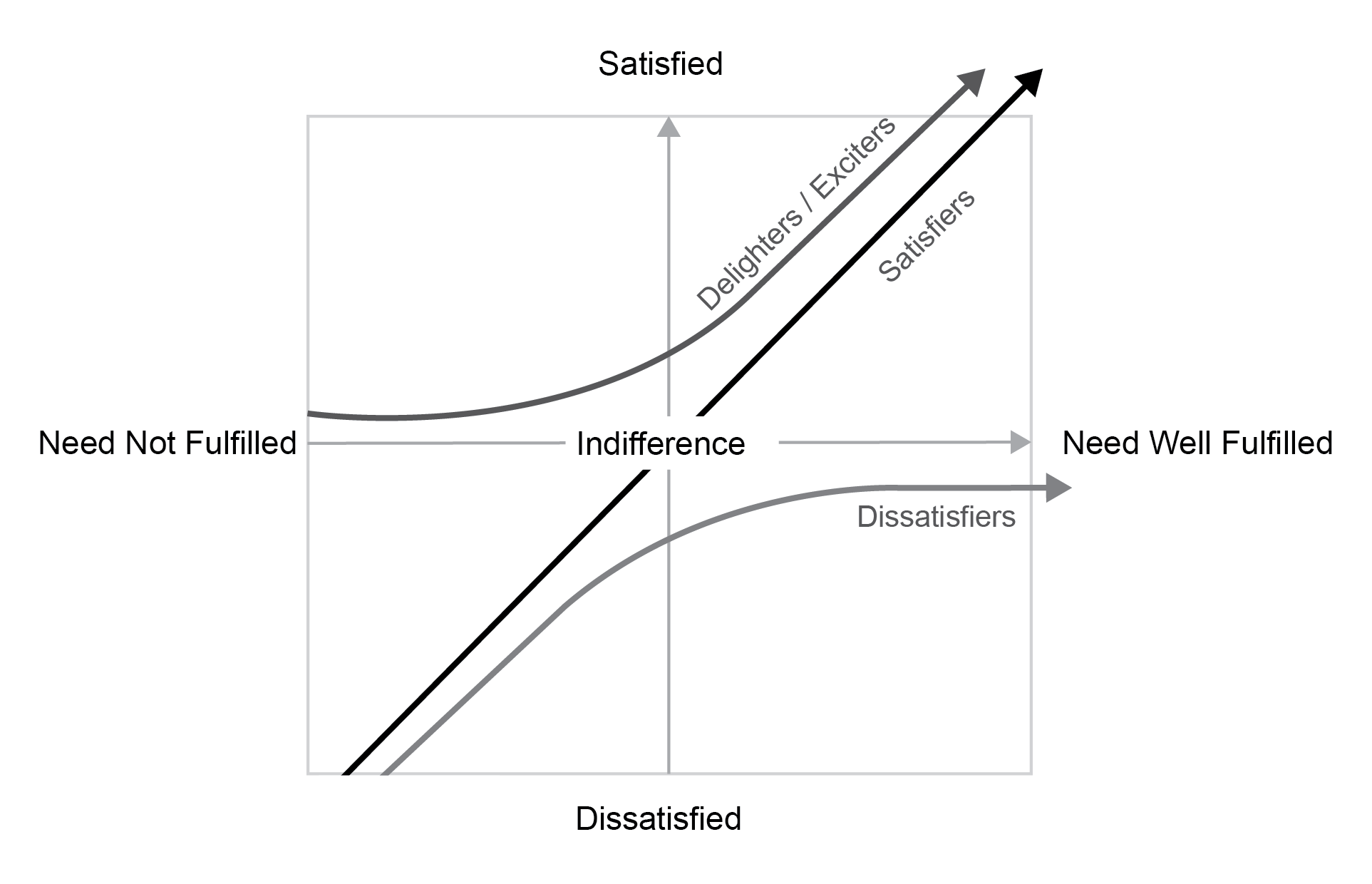Kano Analysis for Feature Prioritization
satisfaction measurements.
Problem
Team
■ Head of Design
■ Senior User Experience Researcher
■ Product Manager
■ Product Marketing Manager
Solution
The Kano model is a method to prioritize features on a product roadmap based on the degree to which they are likely to satisfy customers. Product teams can weigh a high-satisfaction feature against its costs to implement, to determine whether or not adding it to the roadmap is a strategically sound decision.
The model can help teams determine which features will satisfy and even delight customers. We used the Kano Model to prioritize potential new features by grouping them into categories. These feature categories can range from those that could disappoint customers, to those likely to satisfy or even delight customers.
The Kano model is a method to prioritize features on a product roadmap based on the degree to which they are likely to satisfy customers. Product teams can weigh a high-satisfaction feature against its costs to implement, to determine whether or not adding it to the roadmap is a strategically sound decision.
This focus on how customers react to each feature distinguishes the Kano Model from other prioritization frameworks. The Cost Analysis Model, for example, might use customer satisfaction among its scoring criteria but might also use other criteria, such as increased revenue. With the Kano Model, the key consideration for any new feature is how much it will satisfy users. Based on research we suggested the product team focused on three types of features: “delighters”, “satisfiers” and “dissatisfiers”.
delighters or the "wow" factor
“Delighters” create an outsized positive response in customer delight as a company invests in them. If the product does not have these features, customers might not even miss them; but if it includes them, and the company continues to invest in them, they increase customer delight dramatically, high NPS score and overall good will toward the brand. Another way to think of these features is as unique innovations and surprises to include in the product.
For example when Zappos first introduced free shipping both ways it was something unheard of at the time. Consumers responded extremely positively to it and the brand got a huge boost by word of mouth. One downside of these “delighters” is that what delights customers today, becomes tomorrow’s “Basic expectation.” In Zappos’ case many companies (notably Amazon, who acquired them, and Walmart have free shipping both ways) offer this “delighter” as a standard feature. Thus, companies have to invest continuously in their “delighters” to stay relevant.
satisfiers or performance features
These are features that yield a linear increase in customer satisfaction as the company invests in them. Furthermore, they are features customers know they want and weigh heavily when deciding whether to choose a product or another.
For example, for a company which offers cloud storage, as it increases the storage capacity for its customers, the customer delight increases accordingly. Unfortunately, for these features there is an upper bound after which it is not economically feasible to invest further in them. To use the same cloud storage example, there comes a point after which more increases in storage capacity (even if it continues to delight customers) is not beneficial to the company.
dissatisfiers or basic expectations
These are features the product has to include to be competitive. Customers expect these features and take them for granted. Subsequently they must be included. Improving these features does not necessarily lead to more satisfaction, but if they do not work as expected they may lead to dissatisfaction.
For example, when buying a car customers expect working brakes, lights, etc. Improving these past a point is not going to increase customer satisfaction, but there is no consumer who would drive a car off the dealer’s lot without brakes or lights.
Process
customer survey
data interpretation
Impact
This was the first time the organization used the Kano model to inform planning for a new release. Prior to this exercise planning was a tedious process, which was rife with subjective evaluations and second hand opinions about what customers want in a release. The methodology allowed the team to incorporate actual user feedback into their decisions and increase objectivity when deciding which features to add into the product.
The marketing team had also used the results of the study to promote more efficiently the new release. Armed with the “Delighter” features that would be incorporated into the product, they were able to launch more effective and targeted campaigns to generate demand and support the launch of the product.

